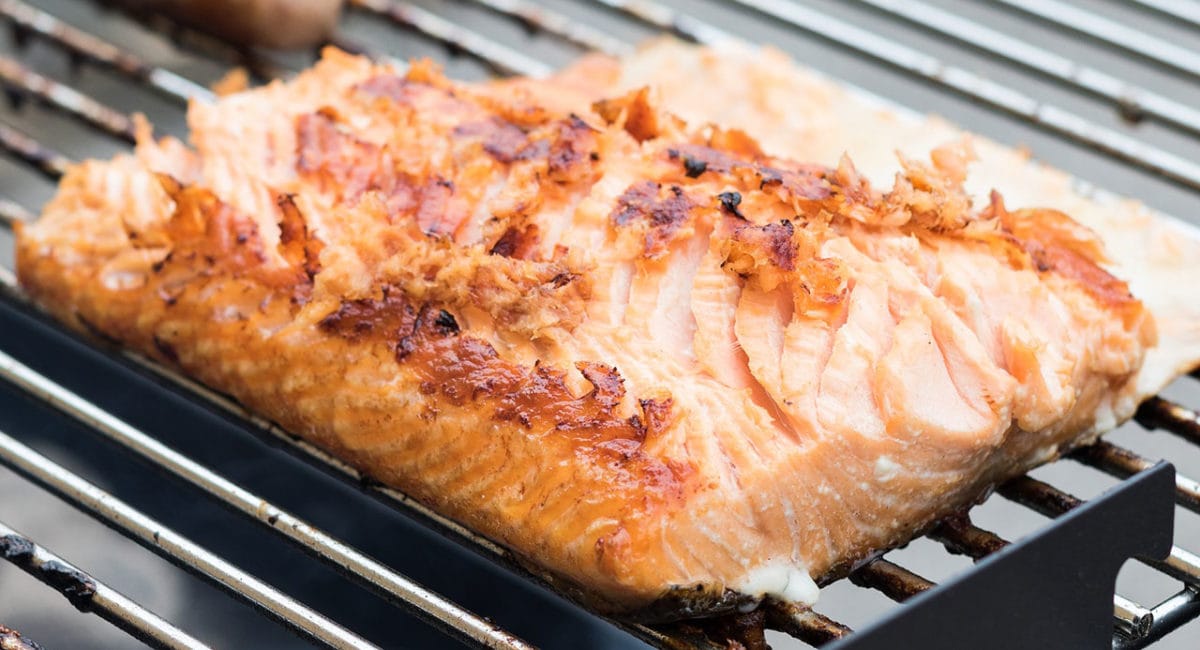How to Grill Frozen Salmon: 8 Easy Tips for Delicious Results
Try the Seafood Box today to get a taste of our delicious, wild-caught salmon, lobster, scallops, and cod.
You may be wondering, “Can you cook frozen salmon on the grill?” And the answer is yes! With just a few tips, you can transform frozen salmon into a perfectly charred, delicate piece of fish on the grill without needing to thaw it first.
Whether you’re looking for a quick, convenient meal or forgot to defrost something the night before, we’ll show you how to grill frozen salmon straight from the freezer. This guide will walk you through all the essentials—salmon cut, grill temperature, and cook time—as well as provide you with tips for achieving delicious results.
First Things First: Is It Safe to Cook Salmon from Frozen?
It’s totally safe to cook salmon, or any fish for that matter, straight out of the freezer. This is true for just about every cooking method except slow cooking, because of the potential for it to slip into a temperature “danger zone.” This is the temperature range of 40°F to 140°F, where bacteria grow most rapidly.
High-heat cooking methods like grilling far surpass this temperature range, so you’re good to go.
8 Tips for Grilling Frozen Salmon
1. Work with smaller cuts for more even cooking.
This isn’t the time to bust out a full side of salmon straight from the freezer. To ensure your salmon grills up evenly charred and cooked throughout, opt for reasonably-sized fillets. We’d work with roughly six-ounce fillets.
This way, you won’t be able to tell that the salmon fillets came straight from the freezer before gracing the grill. Save the full sides of salmon for proper thawing and an impressive meal.
2. Use oil to keep salmon from sticking to the grill grate.
Nothing puts a damper on grilling salmon like salmon skin or flesh stuck to the grate, ruining your beautiful fillet. To avoid this, rub your salmon generously with your preferred high-temp cooking fat, like avocado oil. You can also soak a rag in oil, grab it with some tongs, and rub down your grill grates once they’re hot.
3. Try a robust sauce, well-spiced dry rub, or compound butter for flavor.
Frozen or not, you’ll want to impart plenty of flavor into your grilled salmon. Some of our favorite flavoring options for grilled salmon include dry rubs, sauces, glazes, and rich compound butters. Here’s a few recipes to try out:
If you’re using a dry rub, press it into both sides of the salmon fillet before grilling (along with some oil). If you’re working with a sauce or compound butter, save those for post-grilling.
4. Turn your grill to 375°F (or medium-high heat).
The ideal temperature for grilling salmon? Medium-high heat, or about 375°F if your grill allows you to set the exact temperature. This will allow it to char up nicely, but remain moist and delicate on the inside.
5. Budget a few extra minutes of cook time.
No matter how you cook frozen salmon, you’ll want to budget just a few extra minutes of cook time than usual. As it’s frozen, it will take a little longer to cook through. With six-ounce fillets, you’ll grill your frozen salmon for about four to five minutes a side. Gradually add more time for larger and thicker fillets, or decrease time for smaller fillets.
6. Cook frozen salmon in a foil packet for extra flavor.
Here’s one delicious trick for frozen salmon: make foil packets on the grill. With this method, you’ll place your frozen salmon fillets in a bed of your favorite flavorings—butter, herbs, lemon, and spices—and wrap it all tightly in foil. Simply place your foil packet on the grill and cook for 10 to 12 minutes, adjusting the time based on the size of your salmon.
Once you’ve mastered foil packet salmon, you can start adding in delicious accompaniments like asparagus, baby potatoes, and zucchini. It’s a meal-in-one that soaks up all that incredible flavor.
7. Scrape away any albumin.
When you cook salmon straight from the freezer, there is a trade-off: It might look a little less cookbook photo-worthy. This is because more aggressive cooking methods lead to more visible albumin, a white protein that’s found in all salmon. If you grill your salmon straight from the freezer, more might ooze out. Simply scrape it away; it is harmless.
8. Know when your salmon is fully cooked.
There are a few hallmark signs of perfectly cooked salmon. The flesh should appear opaque, and no longer translucent pink. It should flake easily when pressed with a fork. As we mentioned, you might notice some albumin.
The FDA asserts salmon should be cooked to an internal temperature of 145˚F, which will be a very firm piece of fish.
Try the Seafood Box today to get a taste of our delicious, wild-caught salmon, lobster, scallops, and cod.
Frozen Seafood Guide
Table of Contents
Home – How To Cook Frozen Seafood


